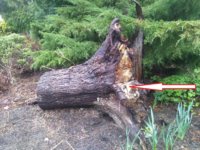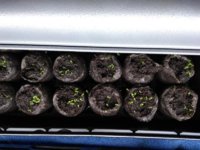mwaller
Well-Known Member
Most most my seedlings continue to have spindly stems, so I decided that replanting was in order. Worse yet, a number if my Piloto Cubano seedlings we're starting to yellow and wither....

When I dumped the old Espoma mix from the pots, it came out like a soggy brick. It's possible that I packed them too tight, but I suspect the Espoma mix is just too thick for these seeds. I repotted most of the seedlings with Jiffy mix, which is much more finely textured. Some were left as controls... We'll see what happens!

My poor Piloto seedlings...!


When I dumped the old Espoma mix from the pots, it came out like a soggy brick. It's possible that I packed them too tight, but I suspect the Espoma mix is just too thick for these seeds. I repotted most of the seedlings with Jiffy mix, which is much more finely textured. Some were left as controls... We'll see what happens!

My poor Piloto seedlings...!













